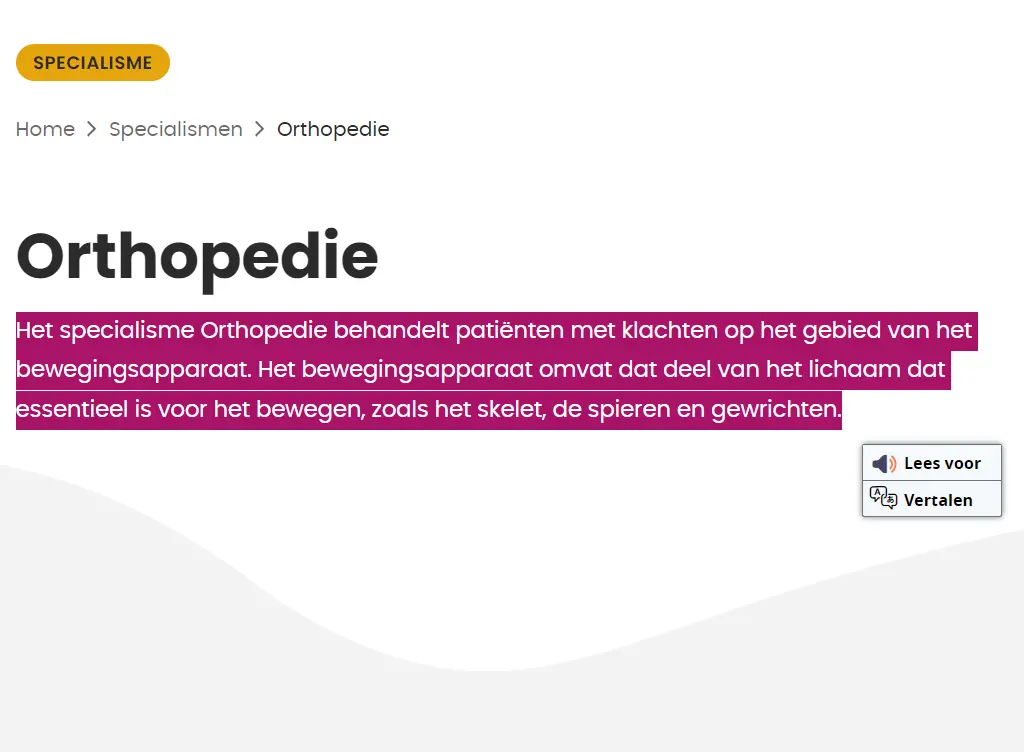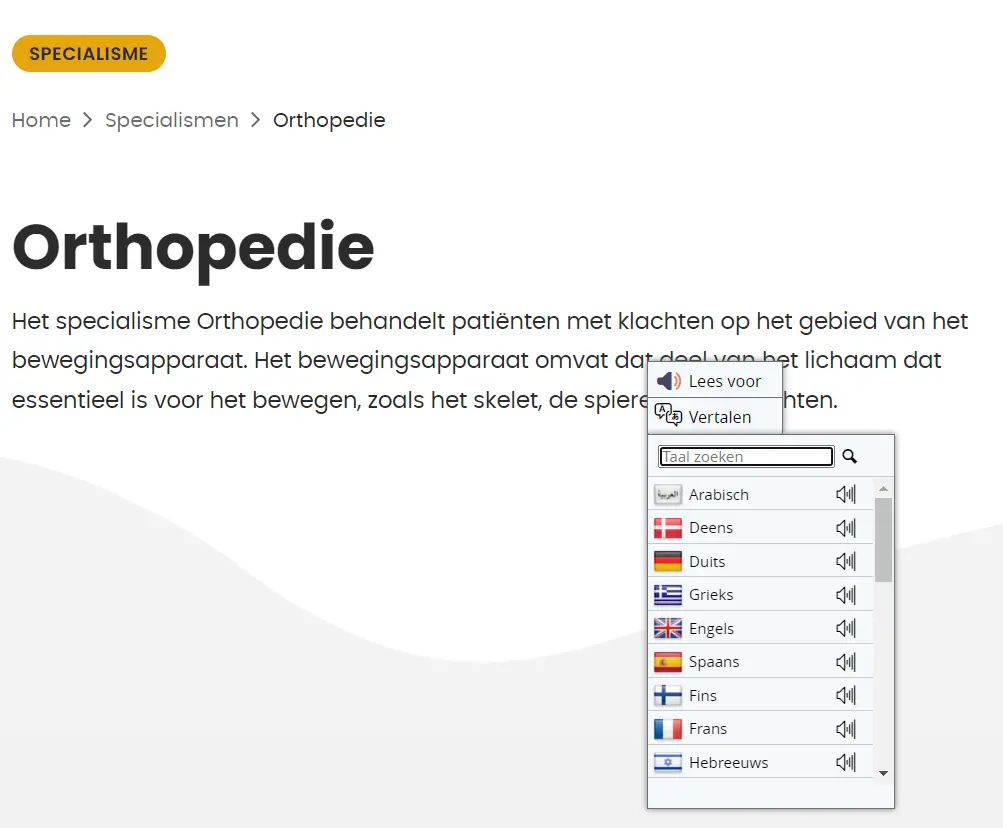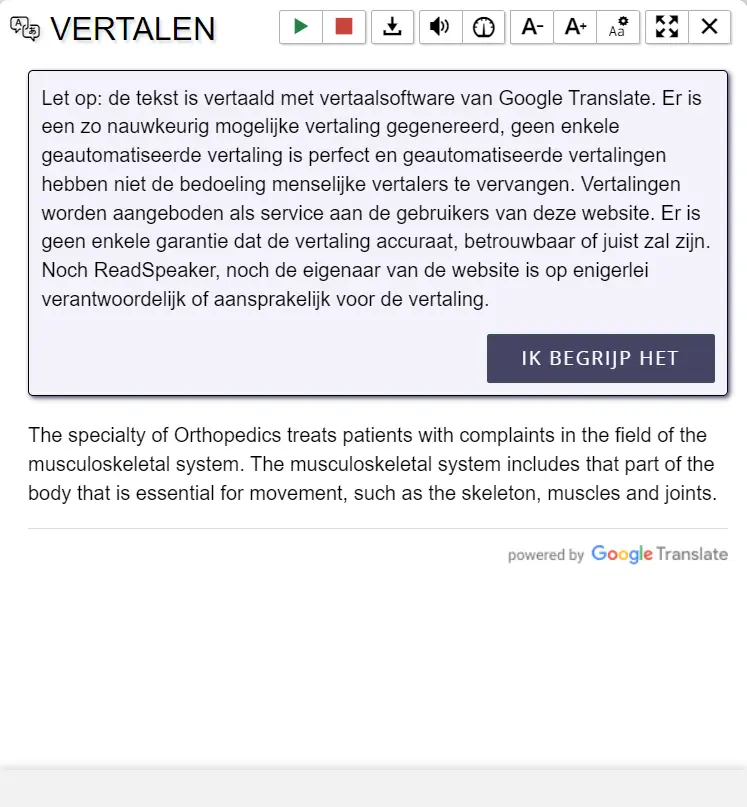Introduction
You have an appointment for a gastroscopy (endoscopic examination of the stomach) with sedation. Your doctor has already told you how this examination works. You can read over everything in this leaflet.
Gastroscopy
What is a gastroscopy?
A gastroscopy is an examination of the inside of your oesophagus, stomach and duodenum. The examination is carried out with a gastroscope, which is a controllable, flexible tube. The gastroscope is inserted carefully into the oesophagus, stomach and duodenum via the mouth, over the tongue. This enables us to have a good look at the mucous membrane.
Initial discussion
Before the gastroscopy takes place, you will have an initial discussion with a nurse.
Why have an initial discussion?
It is important to prepare you, as a patient, as thoroughly and safely as possible for the gastroscopy. The initial discussion reduces the likelihood of problems before, during and after the examination as much as possible. After the initial discussion, the gastroscopy will be scheduled.
What to take to the initial discussion
- Your hospital pass and a valid form of ID
- An Acute Medication Overview (AMO) You can request this from your pharmacy.
Blood-thinning medication
You do not have to stop taking your blood thinners unless someone calls you about this.
If you are in doubt, call the Endoscopy Centre.
After the examination, you will be told when you can start taking them again.
Diabetes
If you have diabetes:
- If you are taking tablets, do not take them on the day before or the day of the examination until you are allowed to eat again.
- If you use insulin, please contact your diabetes nurse or attending physician about any adjustments to the dose of your medication.
Pacemaker or ICD
Do you have a pacemaker or ICD (Implantable Cardioverter Defibrillator)? If so, an appointment will be arranged with the pacemaker technician. He or she will set your pacemaker or ICD so that the examination can take place safely.
A few practical things
Preparation
Fasted state
You must be in the fasted state for this examination. This means that you cannot eat, drink or smoke after midnight.
You may take your morning medication up to 2 hours before the examination unless otherwise discussed with you.
If the examination takes place in the afternoon, you can have a light breakfast before 8 a.m., such as a cup of tea with a rusk, unless otherwise agreed.
After 8 a.m., you must be in the fasted state. This means that you cannot eat, drink or smoke.
The examination
On the day of the examination, report to the department where the examination will take place at the agreed time. Make sure you know whether your appointment is at the Venlo or Venray location (see back of leaflet).
Before the examination
- In the department, you can take a place in a bed.
- An IV needle will be inserted into your forearm or hand.
- You will be connected to a datascope to monitor your blood pressure, heart rate and oxygen level. For this, a cuff will be attached to your arm and a monitor will be clipped to your finger.
- You will be taken to the endoscopy room.
Preparation in the endoscopy room
If you wear dentures, we will ask you to remove these before the examination.
- If you have a tongue piercing, you will need to remove this before the examination.
- You may be given a drink to prevent foam from forming in your stomach.
- Your throat will be numbed by local anaesthetic in spray form.
The doctor will then ask you several control questions. You will then lie on your left-hand side. A protective ring will be put between your teeth to protect your teeth and the gastroscope. The doctor will administer the agreed sedation.
The examination
The doctor will insert the gastroscope into your stomach via your mouth. When the gastroscope is inserted, you may experience a gagging sensation. The gastroscope insertion is a very quick process. During the examination, you can continue breathing as normal.
CO₂ gas
During the examination, CO₂ gas is supplied via the endoscope in order to make the oesophagus, stomach and a small part of the small intestine more easily visible. You may get a full sensation and need to burp.
Microscopic examination
If the doctor deems it necessary, he or she may remove small pieces of mucous membrane from the stomach, oesophagus or small intestine for microscopic examination. This is not painful.
Duration of the examination
The entire examination will take between 10 to 15 minutes.
After the examination
After the examination you will be taken back to the department. Here, you can take time to recover from the sedation. You will stay here for approximately 1 to 1.5 hours. Your blood pressure will be taken every 10 minutes. We will also continually monitor your heart rate and oxygen level.
Returning home
As long as no exceptional circumstances occur and you are fully awake, you may have something to drink. The IV needle will be removed, and the datascope will be disconnected.
The nurse will take you to your personal companion, and you can then return home. After the examination, you can start taking your prescribed medication again, unless otherwise agreed.
The results
You will receive the results of the examination from your doctor (or general practitioner) who requested the examination.
Complications
A gastroscopy is a safe examination. Despite all care, complications may arise in rare cases.
Bleeding
This is usually post-procedure bleeding. This happens mainly to people who take blood-thinning medication or painkillers.
Perforation
A serious complication is a perforation in the wall of the oesophagus, stomach or duodenum.
Breathing
The medications used have an inhibitory effect on your breathing and can cause complications for people with heart and/or lung diseases and with certain neurological disorders.
Aspiration
Another rare complication is a respiratory infection or pneumonia. This may arise if you choke and stomach contents end up in your airways.
What should you do in the event of problems at home?
(Venlo and Venray)
Contact the Endoscopy Centre if you suffer from any of the following:
- Blood loss
- Pitch-black faeces
- Prolonged or worsening stomach pain
- Fever
- Tightness of the chest
During office hours +31(0)77 320 51 32
Out-of-office hours +31(0)77 320 58 10 (A&E Department)
Questions
If, after reading this leaflet, you have any questions, do not hesitate to pose them to the endoscopy nurse before the examination begins. In the event of any urgent questions, you can also contact:
Endoscopy examination
|
Venlo location: |
Endoscopy Centre |
+31(0)77 320 51 32 |
|
Venray location: |
Endoscopy bedroom |
+31(0)478 52 22 22 signal 793-411 |
Contact
Opmerkingen
Ziet u een typfout, een taalkundige fout, of heeft u moeite met de leesbaarheid?
Ziet u teksten of afbeeldingen met auteursrechten die wij niet hebben vermeld?
Stuur een e-mail naar communicatie@viecuri.nl en we zoeken een passende oplossing.
Disclaimer
Deze informatie is algemeen en geen behandeladvies. De informatie is ook geen vervanging van de afspraken die tussen patiënt en zorgverlener zijn gemaakt. VieCuri kan niet aansprakelijk worden gesteld voor schade als gevolg van mogelijke onjuistheden. Bekijk hier de uitgebreide disclaimer.


